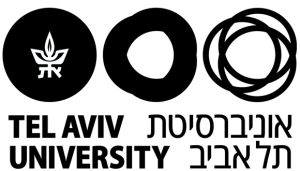DNI Bible
Dictionary of Nature Imagery
of the Bible
The Dictionary of Nature Imagery of the Bible
DNI Bible is targeted at biblical scholars and students of Bible world wide. The Dictionary further gives professionals in the various fields of life & natural sciences and ecology in general access to the use of nature imagery in the literary texts of the Bible.
The corpus for DNI Bible is mainly the Hebrew Bible, although Second Temple literature and the New Testament are also addressed.
What do biblical scholars need to know
in their exegetical work when addressing a plant (e.g. ’eshel “tamarisk”), an animal (e.g., hasidah “stork”), a watercourse (e.g., ’afiq “stream”?), a climate phenomenon (e.g., ruah qadim “the east wind”), or a landscape characteristic (to give a more complexed example, carmel as “border of the desert”)?
What do biblical scholars often miss in their interpretation?
Bible scholars are trained to explain texts in their textual, linguistic, historical, cultural, sociological, and theological contexts, and possibly bring other fields to bear as well. But the life & natural sciences information as well as the ecological contexts in which the Bible was written and to which the texts relate are regrettably minimized, sporadic, fragmentary, or avoided altogether. As the materials remain out of reach to many biblical scholars, they regrettably avoid or minimize this aspect in their interpretations
Vision and Goals
DNI Bible is designed to expand the exegetical toolbox by becoming a recognized device that Bible scholars can turn to when explaining aspects of nature and landscape as part of their scholarly work.
The point of departure for this project is the recognition that knowledge of diverse aspects of life & natural sciences, the ecology of the biblical world, is essential for exegesis. DNI Bible is aimed at deciphering nature images in terms of their biblical occurrences, history of identifications, life & natural sciences as well as their ecological backgrounds. The scope of the project is wide enough to include material culture findings, and to trace the reception history developed concerning diverse interpretive traditions of each entry. Integrating all this data will assuredly serve biblical scholars to produce better informed exegetical studies of the Bible.
The DNI Bible takes an interdisciplinary approach
On the literary side, it is focused on the Bible’s use of nature metaphors and imagery, using philological tools to examine the literary corpora with clear sensitivity to differences of genre, authorship, and compositional history, employing the rich and varied critical methodologies of biblical studies. On the life & natural sciences side, the DNI Bible addresses five fields of nature: fauna, flora, landscape characteristics, climate systems, and water sources. In addition, material culture findings are introduced where relevant, bringing mainly the data of archaeobotany, archaeozoology, and iconography. Each section within an entry is studied according to its specific methodology by professionals of the respective fields, focusing on literary, pictorial, and material sources from the second and mostly first millennia BCE, that are geographically located in the land of Israel, the Levant, within the ancient Near East, and the Eastern Mediterranean at large.
Multi layering and Multidisciplinary Study
DNI Bible Six Layers of Study
Participating Disciplines
Biblical Data
Biblical Studies
History of Identification
Textual Criticism of Biblical Versions & Translations
Ancient Literatures:
Assyriology, Egyptology, Hittitology, other Ancient Near Eastern Cultures, Classical Studies of the Greco-Roman CulturesLife & Natural Sciences Information
Life & Natural Sciences:
Botany, Zoology, Climatology, Geography and Human Environmet Studies, Hidrology, Geology, and more
Material Culture
Archaeology:
Aracheobotany, Archaeozoology, lconography
Exegetical Studies
Biblical Studies
Reception Literature
Reception Literatures:
Second Temple Literature, Classical Studies, New Testament, Early Christianity, Rabbinic Literature, Jewish, Christian, and Muslim Medieval Exegesis, Modern and Post-modern Hermeneutics, History of Art, and more
Project sponsors




